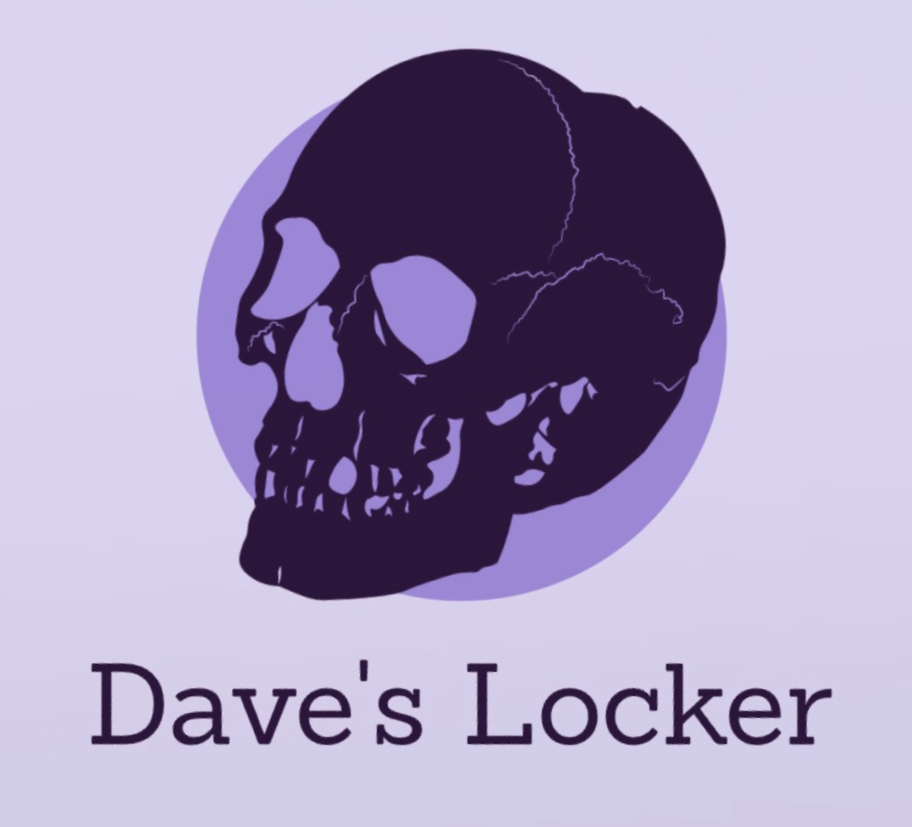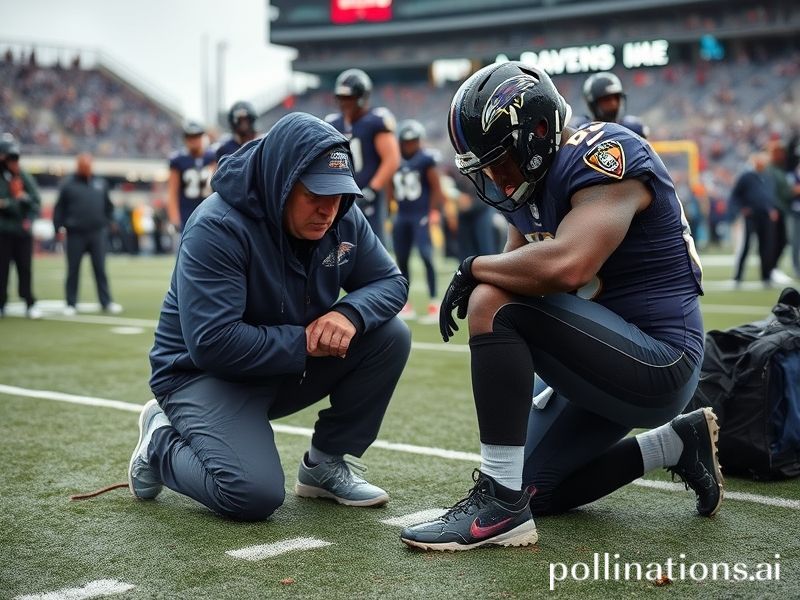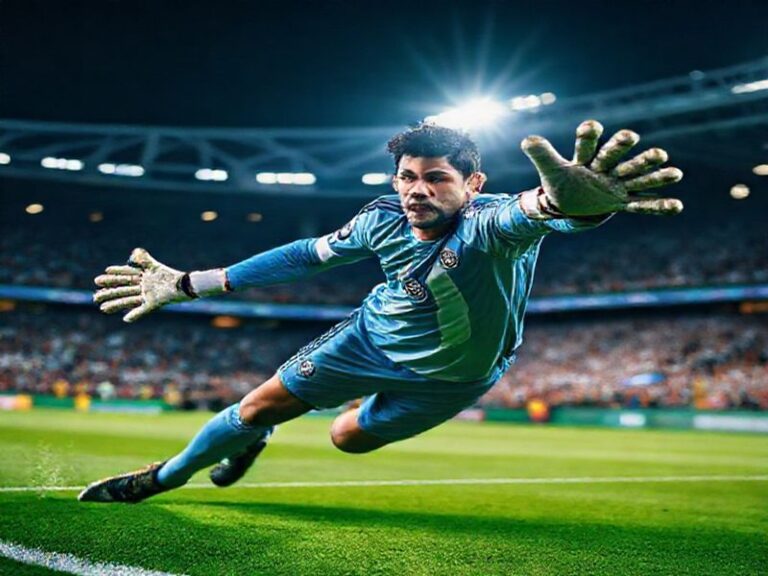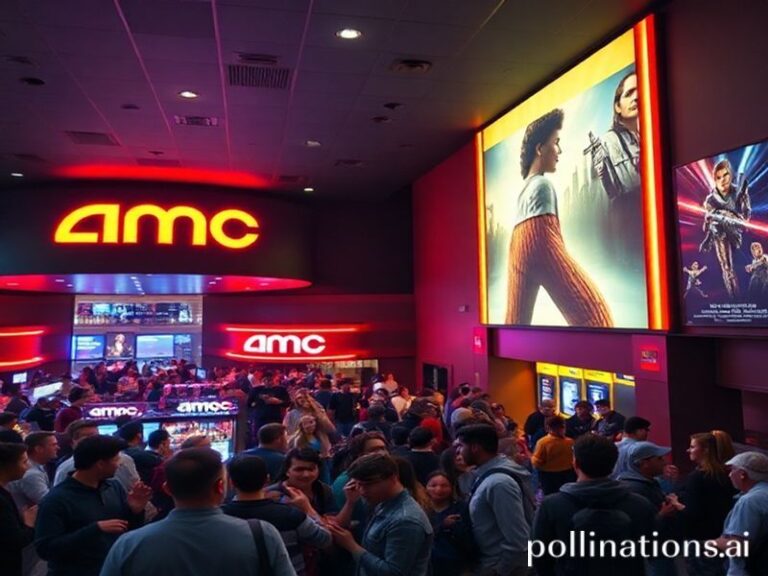Global Fallout: How the Ravens’ Injury Report Became the World’s Favorite New Anxiety
Ravens Injury Report: When a Torn ACL Becomes Geopolitical Theatre
By the time the Baltimore Ravens released their latest injury report, the news had already ping-ponged across six continents, ricocheted through 37 group chats, and been mistranslated into three dialects of emoji. Somewhere in Jakarta a futures trader dumped frozen concentrated orange juice, convinced that a strained hamstring in Owings Mills, Maryland, is the butterfly wing that will finally tip us into global recession. He might not be wrong.
The official tally reads like a medical rap sheet: quarterback Lamar Jackson (knee), running back Gus Edwards (concussion protocol), cornerback Marlon Humphrey (foot). Yet in the grand tradition of the 24-hour doom-scroll, the real casualties are measured in dopamine hits and portfolio shrinkage. European sportsbooks have already shifted the Super Bowl line far enough to make a Swiss banker blush, while Asian streaming platforms—ever the vultures—have begun A/B-testing highlight packages titled “America’s Emotional Collapse, Sponsored by Crypto.”
Never mind that the Ravens are still mathematically alive, or that most humans can’t locate Baltimore on a map without GPS and a stiff drink. In our frictionless age, a bruised fibula is a universal language, like regret or airline pretzels. Chinese manufacturers are already air-freighting “Pray for Lamar” t-shirts that will arrive in U.S. ports before the player himself is cleared to jog. Somewhere in Lagos, a WhatsApp voice note insists the injury was caused by 5G, mRNA, or the same shadowy cabal that rigged the 2020 election and Eurovision. Pick your poison; the algorithm will serve it chilled.
The broader significance? We’ve finally achieved what the United Nations never could: synchronized global panic over a game played in helmets and tights. Climate summits end in polite applause; a high-ankle sprain trends worldwide. If you find that depressing, congratulations—you’re still capable of distinguishing tragedy from farce. Most of us surrendered that superpower somewhere between Season 2 of Tiger King and the fifteenth cryptocurrency meltdown.
Meanwhile, in Kyiv, a barista streams the Ravens’ press conference on a cracked iPad between air-raid sirens. The juxtaposition is not lost on him: half a world away, grown men conduct forensic analysis on another man’s groin, while here the only relevant injury report is “city still standing.” He pours another espresso, extra shot, no sugar—bitterness already provided.
Back in the States, the cable networks deploy the same graphics package they used for the last mass shooting, swapping out the casualty count for “questionable” and “doubtful.” Somewhere a producer sighs with relief that nobody important died today—just a ligament, maybe a season, certainly a fantasy league in Reykjavík.
And yet the show must go on. Because if the Ravens limp, the entire NFL ecosystem limps—broadcast rights twitch, jersey printers recalibrate, and the delicate gyroscope that keeps American consumer confidence spinning wobbles just enough to matter. The IMF may not list “star quarterback health” as a leading indicator, but give it time; the next white paper is surely incubating in a basement at Davos.
So here we are, citizens of the world, united in our ability to overreact in 280 characters or less. The Ravens’ injury report isn’t just a list of body parts gone rogue; it’s a mirror held up to our own fragile, interconnected absurdity. We’ll scream, we’ll meme, we’ll place prop bets on recovery timelines as if cartilage obeys Vegas. And when the next MRI drops—because there is always a next MRI—we’ll do it all again, convinced this time it’s different. Spoiler: it isn’t. But the Wi-Fi is strong, the takes are hot, and the planet keeps spinning—at least until someone tears an ACL doing that too.







